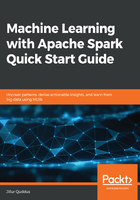
Data becomes big
Fast forward to today—spreadsheets are still commonplace, and relational databases containing nicely structured data, whether partitioned across shards or not, are still very much relevant and extremely useful. In fact, depending on the use case, the data volumes, structure, and the computational complexity of the required processing, it could still be faster and more efficient to store and manage data via an RDBMS and process that data directly on the remote database server using SQL. And, of course, spreadsheets are still great for very small datasets and for simple statistical aggregations. What has changed, however, since the 1970s is the availability of more powerful and more cost-effective technology coupled with the introduction of the internet!
The internet has transformed the very essence of what we mean by data. Whereas before, data was thought of as text and numbers confined to spreadsheets or relational databases, it is now an organic and evolving asset in its own right being created and consumed on a mass scale by anyone that owns a smartphone, TV, or bank account. Data is being created every second around the world in virtually any format you can think of, from social media posts, images, videos, audio, and music to blog posts, online forums, articles, computer log files, and financial transactions. All of this structured, semi-structured, and unstructured data being created in both batche and real time can no longer be stored and managed by nicely organized, text-based delimited files, spreadsheets, or relational databases, nor can it all be physically moved to a remote processing server every time some analytical code is to be executed—a new breed of technology is required.